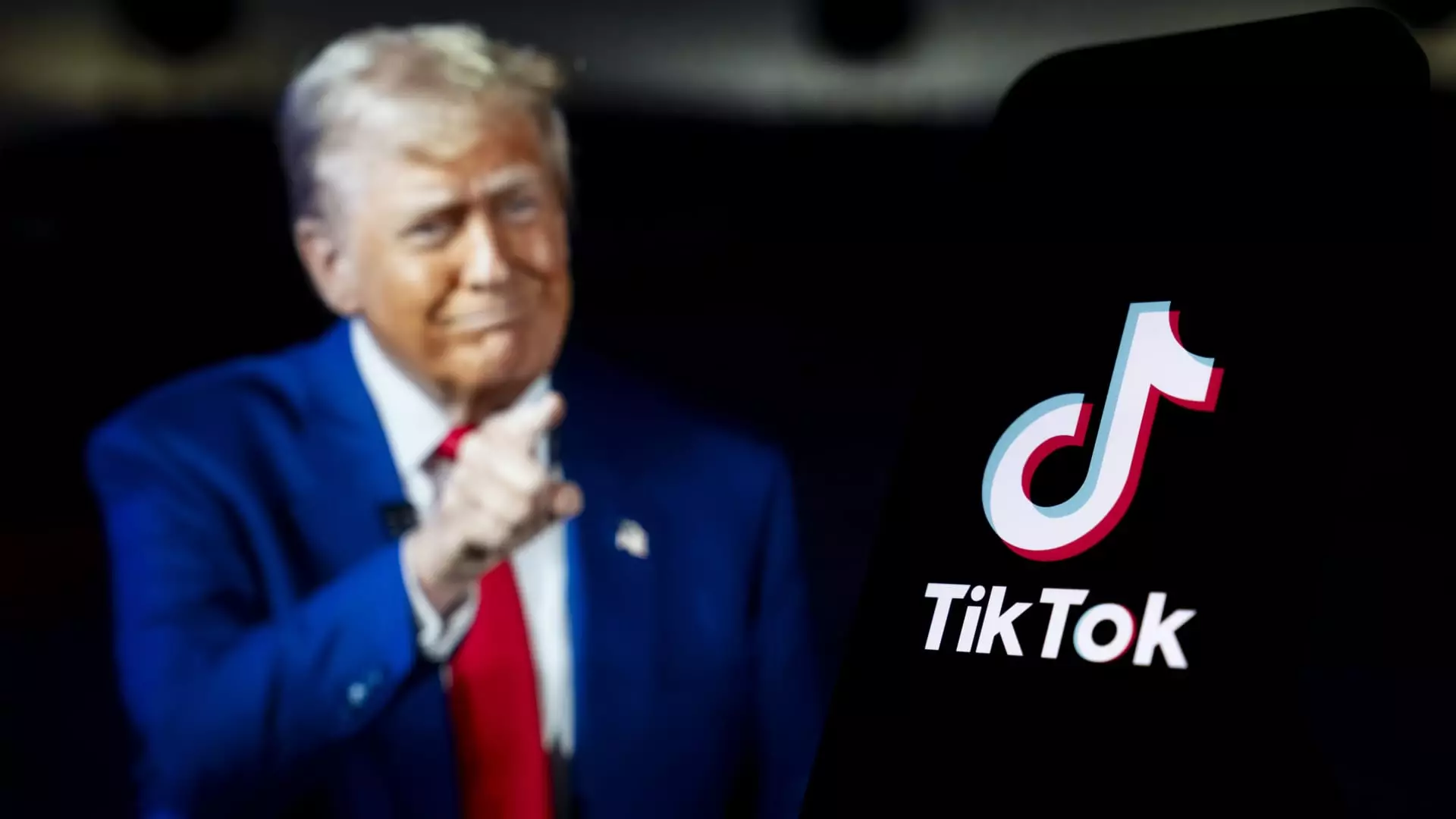In a surprising turn of events, TikTok has demonstrated an impressive recovery in user engagement after a significant decline. Following the app’s temporary shutdown due to legal pressures in the U.S., its traffic has rebounded remarkably. Specifically, data from Cloudflare Radar indicates a mere 10% dip in traffic compared to its pre-shutdown levels, which highlights the platform’s robust user base and its creators’ determination to adapt during challenging times. The sudden fall in usage, which plummeted by a staggering 85%, was primarily linked to a Supreme Court ruling that threatened the app’s operation in the United States. This event underlined the precarious balance TikTok maintains amidst political and regulatory pressures.
The immediate impact of the shutdown, lasting approximately 14 hours, did not deter a substantial portion of its audience. The crucial aspect of this recovery lies in TikTok’s resilience and the loyalty of its creators and users, who quickly returned to the app once service was restored. David Belson of Cloudflare expressed optimism about the app’s recovery trajectory, signaling that the DNS traffic fluctuations provide insights into how users interact with the platform after experiencing service disruptions.
TikTok’s troubles stem from geopolitical tensions, particularly between the U.S. and China, complicating its ownership and operational strategies. The law upheld by the Supreme Court demanded that ByteDance, TikTok’s parent company based in China, either divest its U.S. ownership or face stringent restrictions. This crucial decision not only led to the app’s temporary removal from the Apple and Google app stores but also spurred various U.S. investors, including high-profile names like Mr. Beast and Frank McCourt, to explore potential ownership deals. The involvement of these investors suggests a desire to transfer TikTok’s ownership to American entities, thereby alleviating some concerns regarding data security and national policy.
While the app highlights its engagement recovery, it is important to note that external pressures are steering creators to reconsider their strategies. The fluctuating political landscape leaves many creators uncertain about their future on the platform, prompting them to diversify their presence on other social media platforms.
As TikTok’s future in the U.S. remains precarious, many creators have shifted focus towards building an audience on alternative platforms. Creators such as Dylan Lemay, with a robust follower count, articulated their proactive measures to ensure their careers remain stable in light of potential disruptions. Lemay has cultivated a following on YouTube where he finds a more consistent revenue stream, thereby securing a foundational income outside of TikTok. His story reflects a broader sentiment among creators who have begun to establish themselves across multiple platforms in anticipation of any further actions against TikTok.
Conversely, not all creators have experienced similar success when migrating to other platforms. Noah Glenn Carter, another prominent TikTok figure, expressed frustration at his diminished impact on Instagram and YouTube. His struggles to replicate TikTok’s success underscore the unique elements of TikTok’s environment that help creators thrive. The platform’s interactive nature, unique algorithm, and community-driven culture foster a level of engagement that can be difficult to replicate.
With the uncertainty surrounding TikTok’s longevity in the U.S. market, many brands have reevaluated their marketing strategies and partnerships with creators. As Carter noted, companies are altering agreements to accommodate newer platforms, recognizing that TikTok may not remain a viable option long-term. Conversely, brands may also leverage TikTok influencers on competing platforms to expand their reach, illustrating the ever-evolving dynamics of social media economics.
Platforms like Meta are competing aggressively for content by enticing TikTok creators with better deals. Such maneuvers may not only lure creators away but also dilute TikTok’s unique advantage in the influencer marketing landscape. Creators like Michael DiCostanzo, who have found some traction on competing platforms, express skepticism. He confidently asserts that TikTok’s unparalleled sense of community remains unmatched, creating a challenge for competitors striving to cultivate similar environments.
The aftermath of TikTok’s brief shutdown highlights the app’s capacity to reclaim its audience while revealing the fragility of its standing amid political unrest. While many creators have begun to diversify their platforms, others continue to express faith in TikTok’s longevity. The real question lies in whether TikTok can navigate the ongoing challenges posed by legislative scrutiny and competition while maintaining the vibrant community that has attracted millions worldwide.
TikTok’s recent experiences serve as a reminder that while the app may recover quickly from setbacks, the overarching uncertainties surrounding its operations in the U.S. necessitate ongoing adaptation from both the platform and its creators. As TikTok continues to rebound, its creators will need to harness the lessons learned and prepare for an increasingly competitive landscape, ensuring that they remain resilient in pursuit of their creative ambitions.

